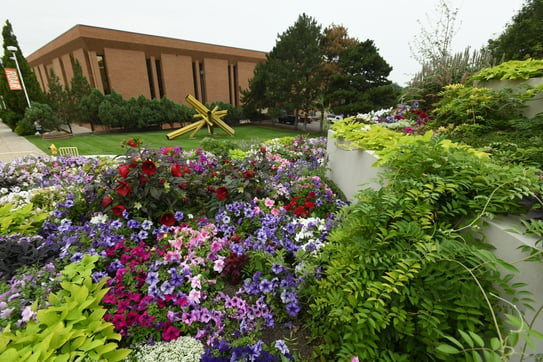
The Benefits of Pollinator Gardens
Most of us are familiar with the benefits of bees. These little pollinators are responsible for helping produce 1 in every 3 bites of food we take. The economic benefit of bees is massive; bees contribute to the production of over $15 billion worth of crops each year. Sadly, 1 in 4 species of bees is at risk of extinction. Mitigating the risk of extinction seems overwhelming and complicated but there are easy ways we can help; by planting a pollinator garden.
Before we get into the logistic of a pollinator garden, I would like to take a moment to talk about pollinators in general. Bees and butterflies are big on the list of animal pollinators we are familiar with but other species like moths, hummingbirds, ants, flies, and beetles are also pollinators.
Pollinators, as a group, help facilitate the production of ¾ of our stable crops. You read that right, ¾ of our stable crops….
Without pollinators foods such as apples (as well as most of our fruits and vegetables), many of our nuts, squashes, and *gasp*…. our coffee would disappear. If we lost just honeybees, we would lose half the produce in our grocery stores. Our nutrition would suffer. And this is if we lost JUST honeybees; this is without accounting for the other pollinators at risk- Monarch Butterflies. Monarchs are now endangered and a candidate for the Endangered Species Act. If we lose pollinators we will also lose the animals that rely on pollinated plants to survive.
Now that we have established why we rely on pollinators, let’s take a moment to talk about pollinator gardens. Before planting a pollinator garden it is important to consider your environment and the plants that naturally grow there. A quick online search or visit to your local greenhouse will provide you with information regarding what native pollinators are best suited for your garden (if you have pets, make sure you ask about pet-safe plants). In Idaho, plants like snowy milkweed, and white yarrow are great plants to consider.
Gardeners should also consider what type of habitat for pollinators exists within their space (don’t worry too much if you do not naturally have a habitat, these can be added). Bees live both above and below the ground. Ground-dwelling bees find their homes by burrowing in well-drained soil (soil that will not pond), while others take advantage of abandoned rodent burrows. Bees that live above ground find places to nest or to make a hive (these can include things like shingles, hollowed trees, clumps of grass, etc.). Butterflies and hummingbirds live in foliage (depending on the stage of metamorphosis, this can include piles of wood for butterflies).
While pollinator gardens provide a great source of plant material for pollinators, they also provide additional added benefits. Pollinator gardens provide habitat for predatory insects (insects that eat pest insects, think Preying Mantis). Root systems of pollinators help stabilize soil. Plants can also act as windbreaks for their little pollinator friends. These plants provide beauty and fragrance to a garden as well. If you are considering planning a pollinator garden, we hope you found this post helpful. Happy Planting!
Sources:
https://www.bbc.com/future/article/20140502-what-if-bees-went-extinct
https://www.fws.gov/initiative/pollinators/monarchs

-1.png)
